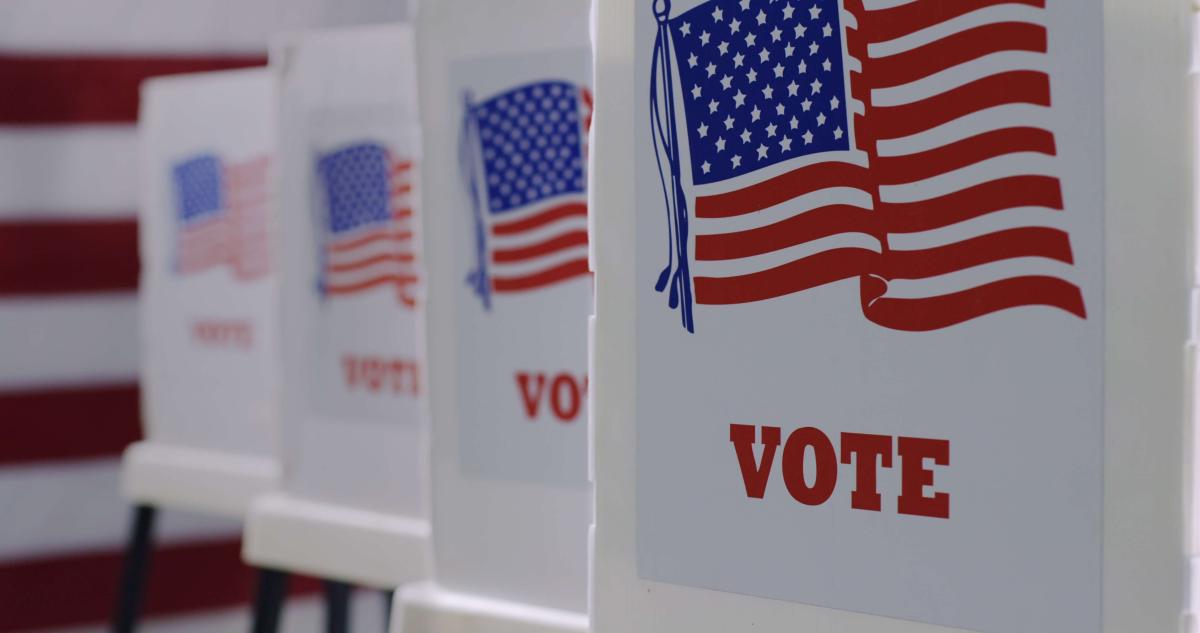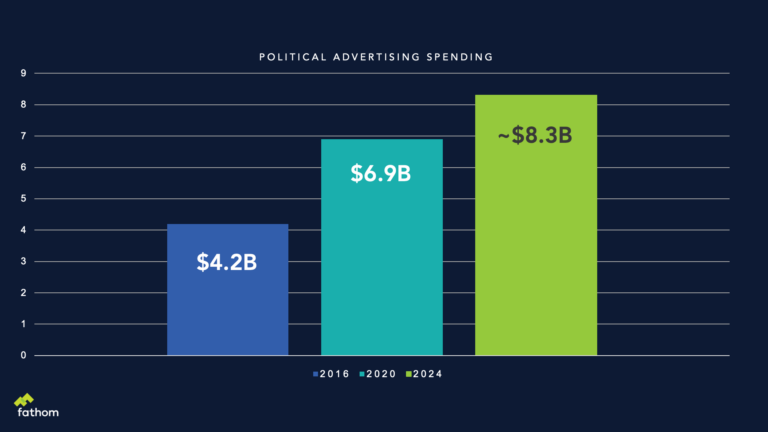Read
advertising in an election year
what we learned in 2020 and expect in 2024

As we approach the 2024 election, we’re reminded of the $6.9 billion spent during the 2020 election cycle—a 63% increase from 2016 and a new record high for political advertising. This surge drove up costs across digital platforms, sometimes as much as 20%, creating unique challenges and opportunities for political and non-political advertisers alike.

We should expect this upward trend to continue as candidates compete for airtime and become increasingly sophisticated in their media strategies. Current predictions estimate that approximately $8.3 billion will be spent during the upcoming election cycle, shattering the 2020 sum.
As a result, you should understand that your campaign performance will be impacted, and broader trends may influence online behavior.
claire wirtanen
Director, Paid Media
here’s what to know and how to prepare
public trust in online information faltered in 2020
Misinformation online was a key issue in digital advertising during the 2020 election cycle. The proliferation of misinformation and the spread of divisive content highlighted the challenges platforms faced in managing quality and integrity.
Despite efforts to increase transparency and regulate political content, the rapid distribution of digital ads and the ease with which misinformation can be spread posed significant challenges. This was further agitated by the onset of COVID-19 and the misinformation surrounding the pandemic.
platforms reacted, causing a ripple effect for advertisers
Facebook and Google banned political advertising in 2020 and later lifted their restrictions. These rapid shifts in political advertising constraints throughout 2020 led to a complex environment for advertisers and the American public.
These restrictions were intended to curb misinformation and reduce the spread of divisive content. However, they also had unintended consequences, such as limiting smaller campaigns’ ability to reach voters and contributing to Americans’ lack of trust in information online.
how we can prepare for the 2024 election cycle
1. diversify your investment
Prioritize diversification in your advertising channels to buffer against the surge in political ad rates. For non-political marketers looking to avoid crowds, consider investing in environments that don’t allow political ads such as Netflix, Disney+, Xandr, and TikTok.

This is also an opportunity to explore channels like audio and digital out-of-home, which political advertisers have been slower to adopt than the rest of the industry.
2. live your mission
Trust and transparency become paramount for non-political advertisers during election cycles. As Americans become fatigued by misinformation, they turn to brands they know and trust. This is especially true in a world where AI accelerates the pace of content development.
Lean on compelling creative that fosters an emotional connection with a public that may grow increasingly skeptical of fact-based appeals over the course of the year.
3. focus on brand safety
Advertisers should leverage brand safety features to ensure their campaigns remain unaffected by the contentious political environment of the 2024 election. Tools like keyword blocklists, context targeting, and site allowlisting can help align ads with suitable content.
Consider working with partners and platforms that offer robust brand safety measures, ensuring your message is delivered in a context that reflects your brand’s values.
To start a conversation or answer any questions, reach us directly hello@fathomdelivers.com



